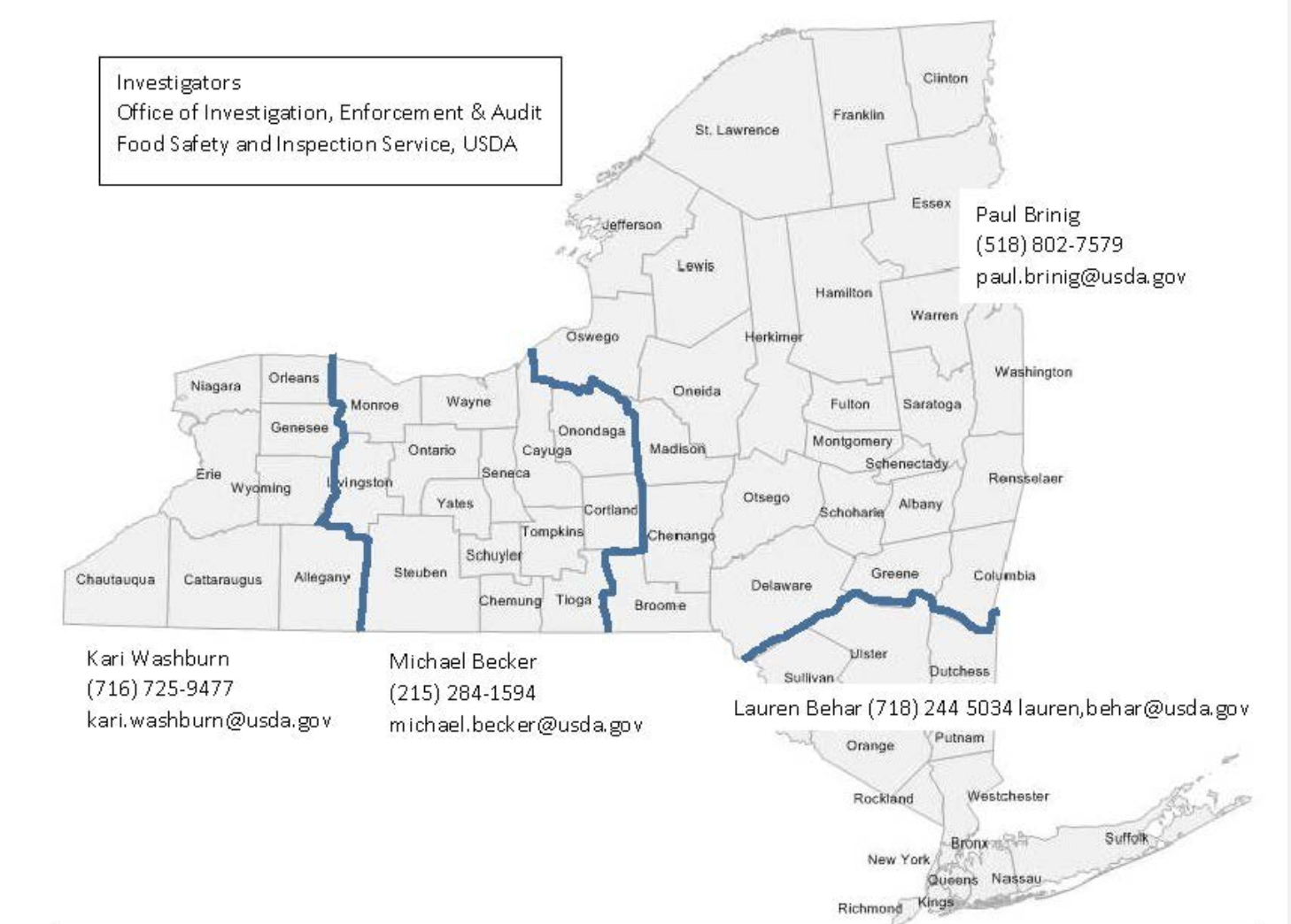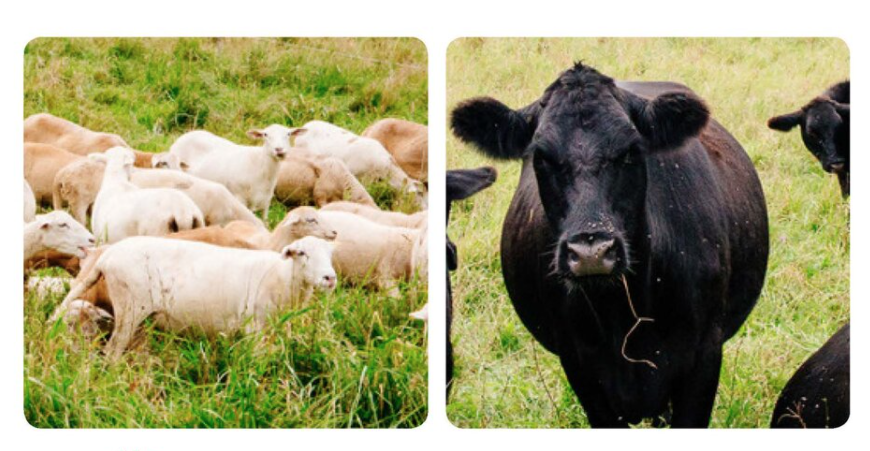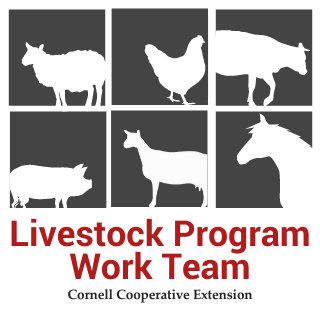CCE Livestock Program Workteam
News, Updates & Recent Publications
Guide to Direct Marketing Livestock and Poultry
If you feel confused by the maze of regulations governing the sale of meat in NYS, this guide is for you. It breaks down the difference between several types of slaughterhouse licenses and inspections, which governmental agencies are responsible for which aspects of the industry, and how each species of livestock needs to be processed and packaged for legal sale in various market channels.

Understanding Slaughter and Butchering Options in NYS
There are 3 types of facilities licensed and inspected to slaughter animals in NYS. Two of these are overseen by the USDA, and one is overseen by NYS Dept of Agriculture and Markets (NYSDAM). Additionally, NYSDAM manages 20-C licenses, which can allow for the butchering, but not slaughter, of meat for direct sale.


Requirements for selling shell eggs in New York State
Regulations and labeling requirements.

USDA Inspectors in NYS
The USDA’s Food Safety and Inspection Service (FSIS) provides oversight for all Custom Exempt and fully-USDA inspected plants. These regional contacts for NYS were up-to-date as of March 2022.

Meat Processing in a 20-C Kitchen
For farmers seeking to regain some control over butchering their animals, there is a middle option between being at the whim of slaughterhouse schedules and opening your own slaughterhouse.

Creative Slaughterhouse Workarounds
In this interactive discussion, we aim to help you regain some sense of control over how, when and where you get your livestock processed, and how you sell meat to customers.

Starting a Red Meat Slaughterhouse
Learn the primary considerations for opening a red meat slaughter and processing facility in NYS, from infrastructure to regulations and from labor to financing.

Guide to Direct Marketing Livestock and Poultry
A guide to the regulations every livestock producer should know, providing details on everything from meat certifications to butchering cuts. It has undergone an extensive review to align with current food safety regulations.

